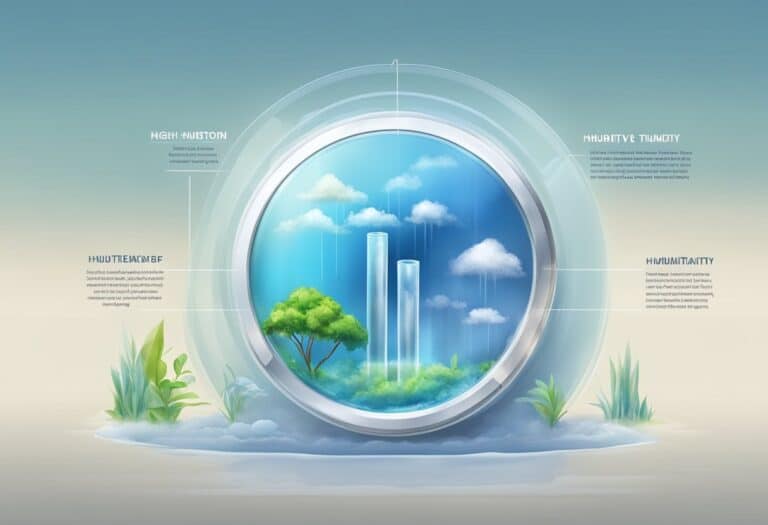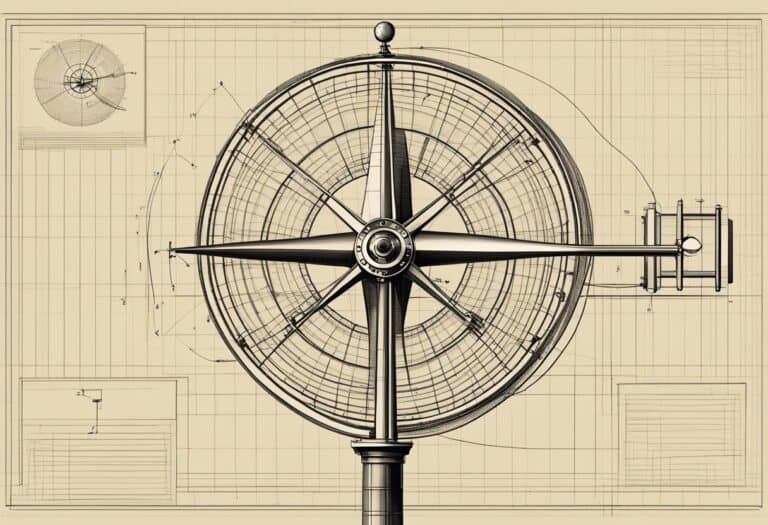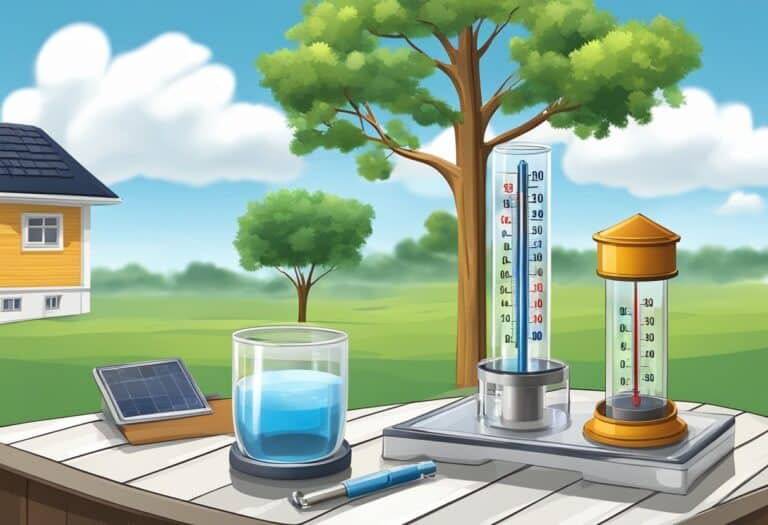Maintaining the right humidity level in your baby’s environment is essential for their health and comfort.
The ideal humidity for a baby lies in a balanced range that supports their delicate skin and growing respiratory systems. It is important to recognize that both overly dry and excessively moist air can pose risks to a baby, potentially exacerbating skin irritations and breathing difficulties. Managing humidity is a subtle art; it contributes to a nurturing atmosphere where your baby can thrive.
Creating an optimal nursery environment involves monitoring and adjusting the humidity to protect against the fluctuating conditions that come with changing seasons. Elements such as heaters can dry out the air in winter, while summer may bring about increased moisture.
By regulating the nursery’s humidity level, you are providing a stable setting that promotes better sleep, comfort, and overall well-being for your baby.
The optimal humidity for a baby’s room is 40-60%, balancing comfort and health by preventing dry skin and respiratory issues while avoiding mold growth. Regular monitoring and adjustments ensure a safe environment.
Understanding Humidity and Its Impact on Health
Humidity plays a crucial role in maintaining your baby’s health, impacting everything from skin condition to respiratory health. It’s important to ensure humidity levels are kept in an ideal range to support your baby’s growth and comfort.
The Role of Humidity in Baby’s Growth and Development
Your baby requires a stable environment for optimal growth. Humidity levels between 40-60% can promote beneficial conditions for your baby’s development. Specifically, appropriate humidity is vital for maintaining the delicate balance of moisture in your baby’s skin, which can protect against conditions such as dry skin and eczema. Moreover, balanced humidity contributes to a comfortable sleeping environment, enhancing your baby’s growth and overall well-being.
- Optimal humidity level: 40-60%
- Conditions prevented: Dry skin, eczema, discomfort
Health Concerns Linked to Incorrect Humidity Levels
Incorrect humidity levels can lead to a variety of health concerns for your baby. High humidity can exacerbate breathing issues, promoting the proliferation of mold and dust mites which can trigger respiratory issues. Conversely, low humidity may cause discomfort and worsen conditions like sensitive skin or contribute to dry skin, making a baby more susceptible to irritants. It’s imperative to manage the temperature and humidity levels carefully to prevent these health risks.
- High humidity risks:
- Respiratory issues
- Proliferation of allergens such as mold and dust mites
- Low humidity risks:
- Dry and sensitive skin
- Increased discomfort and potential for skin irritation
Setting Up the Ideal Nursery Environment
Creating the right nursery environment is crucial for your baby’s comfort and health. Attention to detail in regulating humidity levels and ensuring good air quality will enhance your baby’s sleep quality and overall well-being.
Choosing the Right Humidifier for Comfort and Safety
Selecting a humidifier for the nursery involves considering both comfort and safety features. For optimal safety, opt for a model with an auto-shutoff function to prevent any risk when water levels are low. The best humidifiers for a nursery emit a gentle, whisper-quiet mist to maintain moisture without disrupting your baby’s sleep. Position the humidifier at a safe distance from the crib and change the water regularly to prevent mold growth.
Optimal Temperature and Humidity Balance
The balance of temperature and humidity in your baby’s nursery is a delicate one. Aim for a humidity level between 40-60%, which can be measured with a hygrometer. This range helps to maintain the mucous membranes’ moisture, reducing the chances of respiratory infections. To ensure a consistent environment, equip the room with both a humidifier and a dehumidifier if necessary, along with a reliable thermometer to monitor the nursery’s temperature.
Ventilation and Air Quality Considerations
Adequate ventilation is vital for keeping the nursery’s air fresh and maintaining good indoor air quality. However, it’s important to avoid creating drafts. Regularly open windows to allow outside air to circulate into the room when the weather permits, but ensure the crib is not directly in the path of the airflow. An air purifier can also aid in removing pollutants and allergens, contributing to better overall respiratory health and sleep quality for your baby. Always monitor humidity levels to ensure they remain in the ideal range, adjusting your ventilation practices accordingly.
Managing Humidity Throughout the Year

Maintaining the ideal humidity in your baby’s room is crucial for their comfort and health. With changing seasons, you must adapt to keep indoor humidity levels healthy and comfortable.
Addressing Winter Dryness and Summer Moisture
During winter, indoor air tends to become dry, as heating systems can reduce humidity levels. To counteract low humidity, consider using a humidifier in your baby’s bedroom to introduce moisture into the air. Aim for humidity levels between 30% and 50%, which are often cited as the correct humidity levels. A simple way to monitor this is with a hygrometer.
In contrast, summer months often bring high humidity, which can make the air feel sticky and support the growth of mold and dust mites. To reduce humidity, use an air conditioner or a dehumidifier. These devices help maintain indoor humidity levels and can make the room feel cooler, which is important for your baby’s comfort.
Utilizing Humidity Control Devices
Humidity control devices play a vital role throughout the year. A humidifier can add necessary moisture to the air during dry months, while a dehumidifier can remove excess moisture during humid months. However, it’s crucial to keep these devices clean to avoid the growth of mold and bacteria.
Winter: Humidifier (Adds moisture)
- Use: When humidity drops below 30%
- Benefit: Prevents dry air which can irritate skin and respiratory systems
Summer: Dehumidifier/Fan/Air Conditioner (Removes moisture)
- Use: When humidity exceeds 50%
- Benefit: Combats high humidity, prevents mold, and enhances comfort
Always follow the manufacturer’s guidelines for the use and maintenance of these devices to ensure they function effectively and safely.
Monitoring and Maintaining Optimal Humidity
Maintaining the ideal humidity level within a nursery is crucial to ensure the well-being and comfort of your baby. Using accurate tools for monitoring and applying effective interventions can help maintain these levels within the optimal range.
Using Hygrometers and Thermometers
To keep your baby’s room at the correct humidity level, it’s essential to regularly monitor humidity levels. A digital hygrometer, paired with a thermometer, allows you to track both temperature and moisture in the air. Aim for ideal humidity levels between 40-60%, as this range supports your baby’s comfort and health, while also protecting the nursery from mold growth and overly dry air.
- Place the hygrometer in a central location away from direct sunlight, drafts, radiators, and windows to get an accurate reading.
- Check the readings at different times of the day to understand how indoor activities and outdoor weather affect the humidity.
Signs of Imbalanced Humidity and Interventions
Noticeable changes in your nursery’s environment may indicate imbalanced humidity levels. Dry air may cause your baby to have dry skin or respiratory irritation, while high humidity could lead to condensation on windows and walls, fostering mold growth.
For Low Humidity:
- Use a humidifier; an evaporative type doubles as a white noise machine to help your baby sleep.
- Add plants to the room, as they can naturally increase moisture levels.
For High Humidity:
- A dehumidifier can reduce excess moisture.
- Increase ventilation to help control humidity levels; however, ensure it does not disrupt the overall warmth of the room.
Regularly monitor humidity levels and adjust your interventions as needed to maintain the normal humidity levels for a healthy and comfortable nursery environment.
Frequently Asked Questions
Understanding the ideal humidity level for your baby’s room is crucial for their health and comfort. Below, you can find answers to commonly asked questions about maintaining the right temperature and humidity for your little one.
What is the optimal temperature and humidity level for a baby’s room?
The optimal temperature for a baby’s room should be between 68 and 72 degrees Fahrenheit. Humidity levels are best kept at about 40-60 percent. This creates a comfortable environment that can help safeguard your baby against issues such as dry skin or congestion.
Can high humidity levels affect a baby with eczema?
Yes, high humidity levels can worsen eczema in babies by promoting the growth of dust mites and mold, which are common triggers for eczema flare-ups. It’s important to maintain a balanced humidity in the room to minimize these risks.
What steps can be taken to reduce high humidity in a baby’s room?
To reduce high humidity in your baby’s room, use a dehumidifier to extract excess moisture. Ensure good ventilation by opening windows when the weather allows, and use air conditioning to keep the room cool and dry.
How can humid weather impact an infant’s comfort and health?
Humid weather can lead to overheating and discomfort for infants. It can cause heat rash, disrupted sleep, and can increase the risk of respiratory infections due to the proliferation of mold and dust mites.







